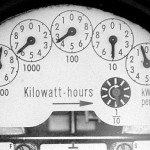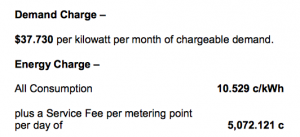|
A victory for McMansions? Fixed charges to households surge, while small business may pay two-thirds of their bill on fixed charges, as government owned utilities move against solar and energy efficiency. The Queensland government managed to get some sympathetic coverage on the ABC and in the local mainstream media – and even some specialist websites who should know better – about the supposed “fall” in electricity bills in the upcoming year. But what they did not mention – presumably because it wasn’t in the Queensland Competition Authority press release – was a huge jump in fixed charges that will penalise households and small business, and reduce the incentive to install rooftop solar. Fixed charges for households will jump more than 20 per cent to $1.07 a day, meaning that with GST, households will pay a minimum $428 a year on fixed charges, no matter how little electricity they consume. The consumption rate has been cut to 22c/kWh but this means nothing for households that consume around 7kWh a day – pensioners and single person households for instance, and others who pay attention to energy efficiency. Their annual bill will now be more than $1,050 – which equates to a rate of 42c/kWh, probably the highest in the world. And their ability to offset that with solar is greatly reduced because so much of the cost is unavoidable. But small businesses – butchers, restaurants, takeaway food installations, or anyone using refrigeration and cooking – face an even greater proportion of fixed charges under the new scheme. According to the new tariff 44 (above) – which will now be compulsory for businesses consuming more than 100MWh a year (275kWh a day) – the fixed charge will be $50 a day, or $8,000 a year including GST.
The consumption rate is slashed to just 10.6c/kWh, or around $27 a day, which means that if a business uses just over 100MWh a year, its bill will be two-thirds unavoidable fixed charge, and one-third on consumption. But it gets worse. If, on just one day a month, the business’s consumption goes over 30kW on average in any one 30 minute period, the business will be hit with a “demand charge”. If it uses 40kW in that time period, for instance, it will pay another $400 for that month, even if that day’s consumption was a one-off. And to top it off, all consumers will face as-yet unspecified “metering charges”. As we reported last year, fixed charges for the biggest consumers have jumped even more extravagantly to nearly $500 a day. Steve Madson, from Country Solar, says the new tariffs will penalise anyone “who has done the right thing”, such as install energy efficient appliances and LED lighting, and installed solar. “It goes in direct opposition to the marketing of these companies about being sustainable, turning down air conditioning, using pool pumps more wisely.” Madson says it also kills the case for rooftop solar in many incidences, because it removes the ability to reduce bills. Businesses that last year paid 30c/kW for electricity will now pay 11c/kWh plus unavoidable fixed charges of twice that. Madson says many consumers are furious. “They’re telling us they just want to cut the line. They say ‘just give me a back-up generator’, because they don’t want to pay those charges.” The warnings about using fixed charges as a response to solar have been countless; from the CSIRO Future Grid study, to numerous studies in the US – even former US Energy Secretary Stephen Chu.
0 Comments
Leave a Reply. |
|



 RSS Feed
RSS Feed


